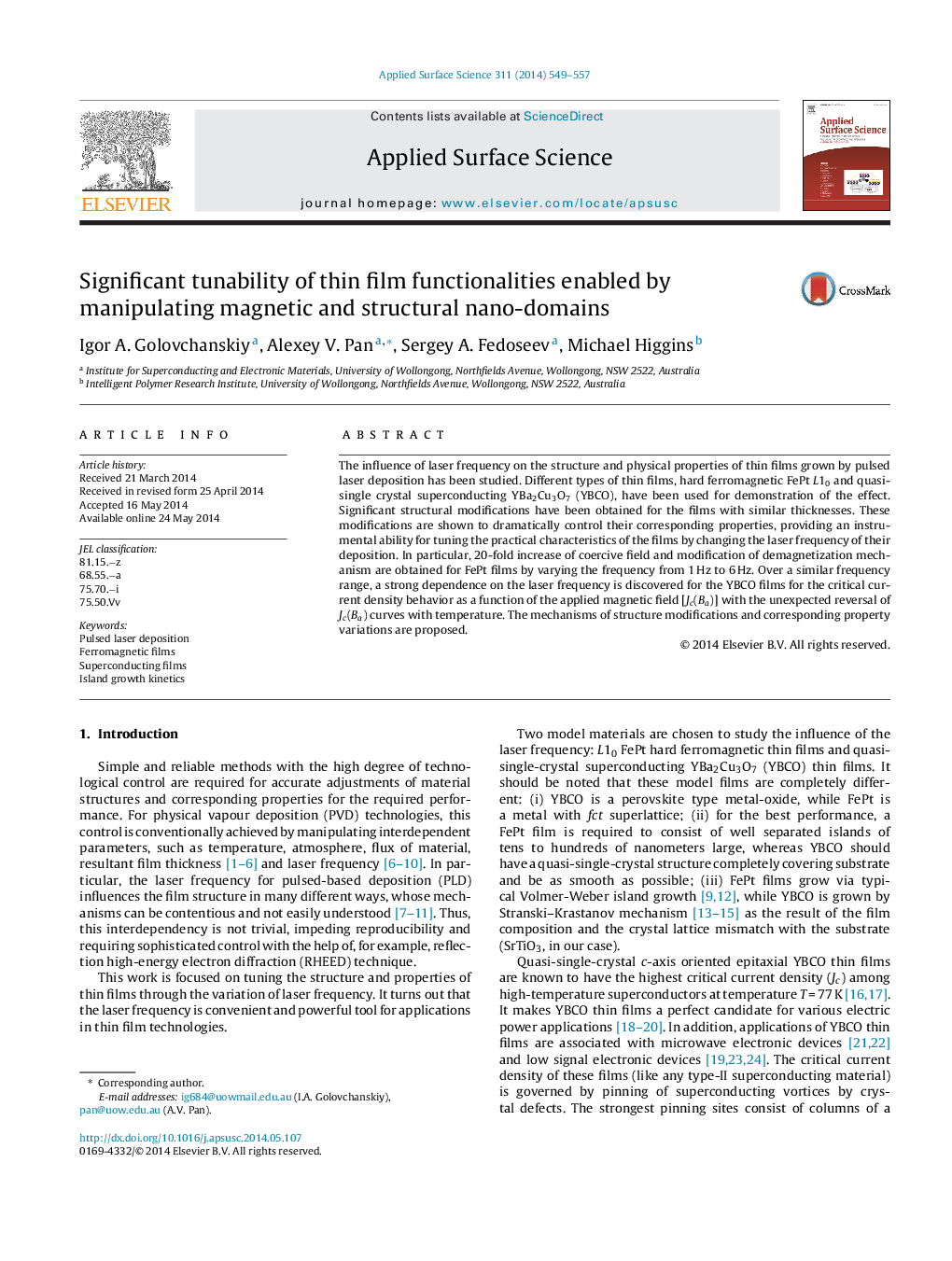| Article ID | Journal | Published Year | Pages | File Type |
|---|---|---|---|---|
| 5361386 | Applied Surface Science | 2014 | 9 Pages |
â¢Dramatic structure variations of L10-FePt and superconducting YBCO thin films have been obtained by “simply” varying the laser frequency for pulsed laser deposition of these films, while keeping the thickness of the films constant.â¢The origins of structure variation with laser frequency for both Volmer-Weber mode grown FePt and Straski-Krastanov mode grown YBCO films are discussed and compared.â¢Deposition frequency increase from 1 to 6 Hz leads to up to 20-fold enhancement of the coercive field in FePt films of constant thickness obtained by modification of demagnetization mechanism in laser frequency-varied structures (observed with MFM).â¢Varying growth kinetics of YBCO films by laser frequency leads to strong modification of dependence of critical current density on applied magnetic field (Jc(Ba)) with unexpected Jc(Ba) reversal behavior with measurement temperature; such reversal behavior was never reported before; the mechanism of Jc(Ba) modification is discussed.
The influence of laser frequency on the structure and physical properties of thin films grown by pulsed laser deposition has been studied. Different types of thin films, hard ferromagnetic FePt L10 and quasi-single crystal superconducting YBa2Cu3O7 (YBCO), have been used for demonstration of the effect. Significant structural modifications have been obtained for the films with similar thicknesses. These modifications are shown to dramatically control their corresponding properties, providing an instrumental ability for tuning the practical characteristics of the films by changing the laser frequency of their deposition. In particular, 20-fold increase of coercive field and modification of demagnetization mechanism are obtained for FePt films by varying the frequency from 1Â Hz to 6Â Hz. Over a similar frequency range, a strong dependence on the laser frequency is discovered for the YBCO films for the critical current density behavior as a function of the applied magnetic field [Jc(Ba)] with the unexpected reversal of Jc(Ba) curves with temperature. The mechanisms of structure modifications and corresponding property variations are proposed.
